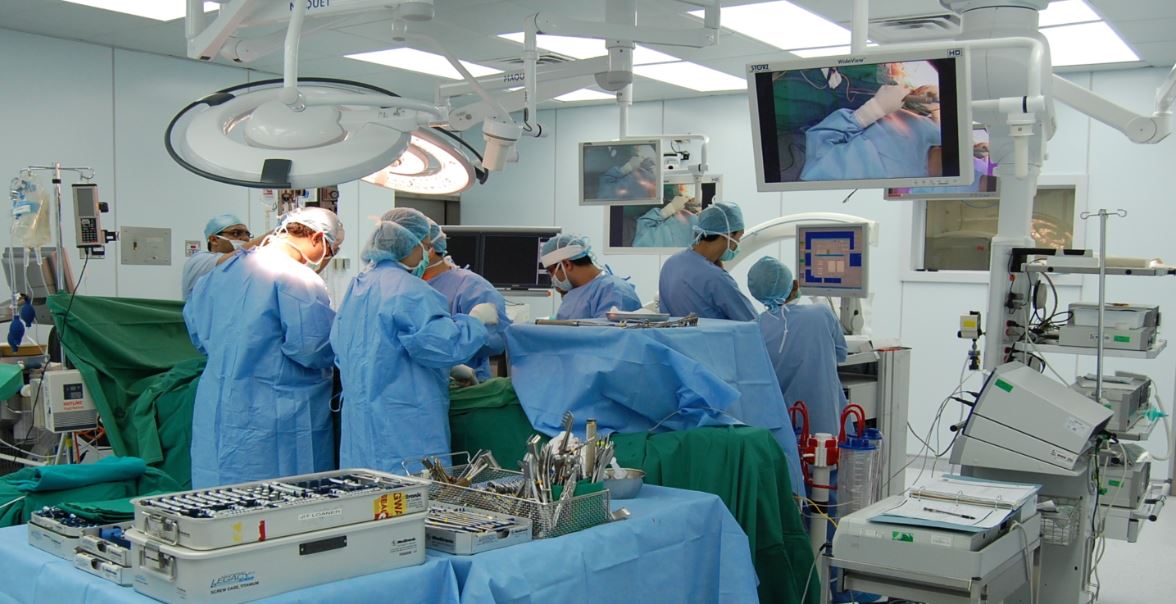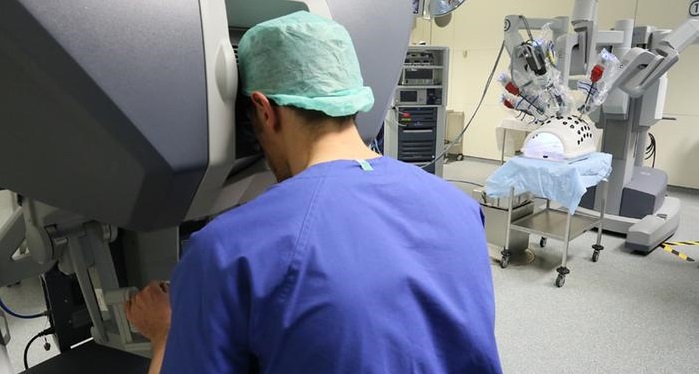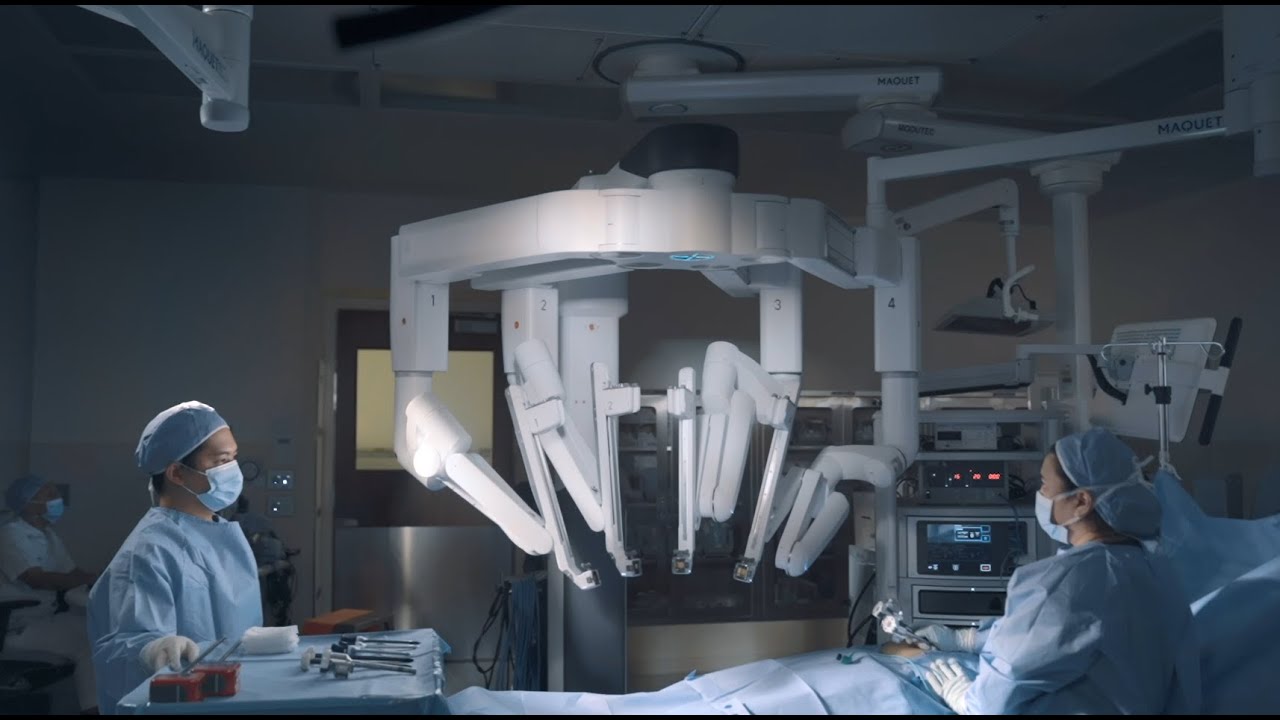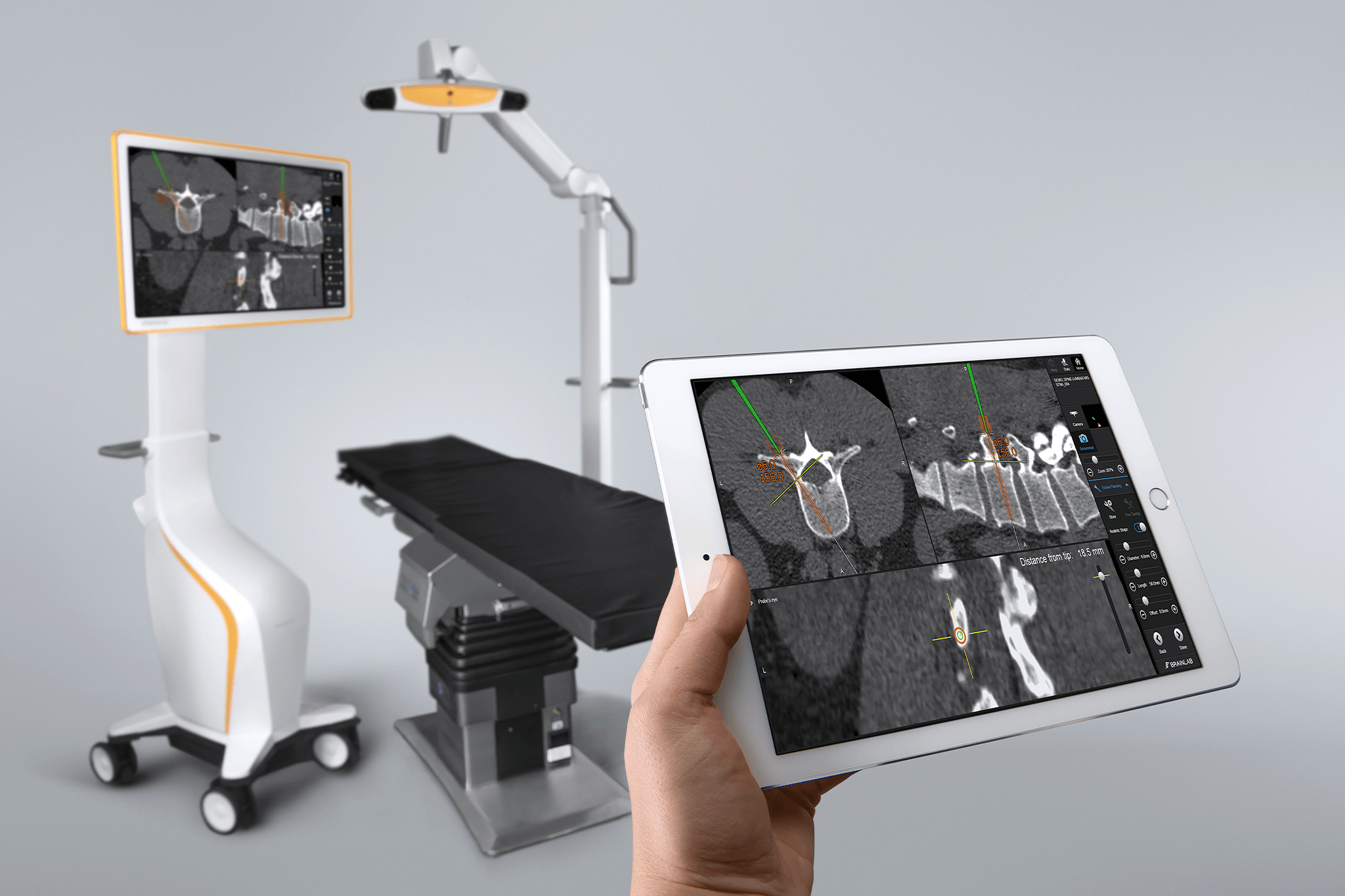About Department
The Operations Department was established at King Abdulaziz University Hospital in 1978. It consisted of three operating rooms and one for local anesthesia. The department was moved to the current building in 1997. The department consists of twenty-five operating rooms distributed as follows: main operating rooms, two emergency operating rooms, and two operating rooms. Childbirth, day surgery unit operating rooms, and burn unit operating room. The Department of Operations covers all surgical specialties, including general surgery, neurosurgery, open heart and vascular surgery, orthopedics, eye surgery, urology, ENT surgery, oral and maxillofacial surgery, plastic surgery, pediatric surgery, and robotic surgery. The Operations Department also provides the necessary medical services for the Pain Management Unit, Hematology Department, and Endoscopic Operations. The Operations Department actively participates in the various workshops held by the different departments in the hospital, where eight digital operating rooms have been equipped to keep pace with modern developments in the world. These digital rooms enable the surgical team to carry out and follow-up operations electronically. Direct communication with the surgeon and the medical team is done in audio and video from any A place inside and outside the hospital through the means of communication for that. The Operations Department looks forward to developing the services provided by applying the latest modern technology in operating rooms to serve patients and ensure the safety of operations
Our facilities
The operating room department is located on the ground floor in the left wing near the surgical intensive care unit, emergency department and radiology department. The main operations department contains 16 fully equipped operating rooms and within the scope of service. Including 8 digital operating rooms. Rooms connected directly with the sterilization unit and indirectly with the laboratories and the main store. The main operating rooms are equipped with the latest technology, for example:
- - Digital Rooms
- - Robotic Surgeon
- - Laser Devices
- - Automated Urology Endoscopy Room
- - Orthopedic Surgery Binoculars Tower
- - Brain Navigation Device
- - Neurosurgery Microscopes
- - Complex Spinal Surgeries
- - Obesity Operations
- - Eye Surgery Microscopes
- - Ear, Nose and Throat Microscopes

Digital Operating Room
Digital operating rooms are integrated solutions based on digital technology for the benefit of the patient, the medical staff and the facility as a whole. It enables the medical staff to accurately control the devices and media and prepare the operating room according to the desire of each surgeon. These rooms also allow direct live transmission of operations, with audio and video inside the facility and all over the world. Operations are saved through programs embedded in the digital room computers and then in a file in the EDA network system. These rooms allow the surgical staff to focus on surgical procedures effectively through the unified control of endoscopes, operating lights and other medical devices by touch via the digital EDA system.
Robotic Surgeon
The robotic surgeon is designed to facilitate complex surgeries using minimally invasive methods and is controlled by the surgeon through a cockpit. The De Vinci system consists of the surgeon's cockpit, usually in the same operating room and the robotic arm cart next to the patient, which is controlled by the surgeon through the cockpit. The robotic arms hold the surgical tools such as the scalpel, scissors and cautery tools. The surgeon must first check the weight of the arms to see how hard they are during operation. After that, the surgery is performed with the arms through the main cockpit, by controlling the robotic arm cart. The robotic surgeon's joints exceed the range of motion of the human wrist. Without jitter and with great accuracy. It is also very similar to the surgeon's hand. The De Vinci system is used in urology, gynecology, thoracic surgery, pediatric surgery and general surgery. For example:
- - Prostatectomy, ureteral and bladder modification surgeries, nephrectomy and ureter re-implantation
- - Hysterectomies, fibroids and vaginal fixation
- - Hiatal hernia repair process
- - Resection of the pancreas, gallbladder, gastric bypass, gastric bypass, resection of the adrenal gland, spleen and intestine


Automated urology endoscopy room
The UROSKOP system provides a wider range of diagnostic and therapeutic tests for patients. It has an open interface that allows to attach the endoscope or to connect the ultrasound and urodynamic video systems with workstations. All examinations are performed with excellent image quality and without patient repositioning for a higher level of patient care. The system includes:
- - Radiological examinations of the genitourinary system
- - Transurethral Interventions
- - laparoscopy
- - Urodynamics
- - Ultrasound Examinations
Surgical navigation device for the brain and nerves
The Neuronavigational system enables surgeons to accurately visualize the anatomy of a patient's brain during surgery and also track the anatomical location of surgical instruments - and the radiographs also enable brain transformations that occur during surgery. By using these techniques and during surgery such as lumpectomy, surgeons can navigate more precisely, perform less invasive procedures, and help improve clinical outcomes. It also contains a spine unit, which is useful in planning and implementing operations, such as fixing with screws and stents
